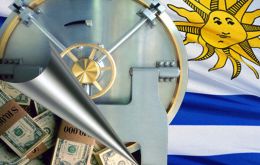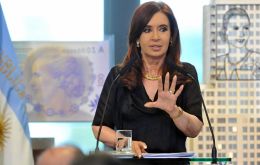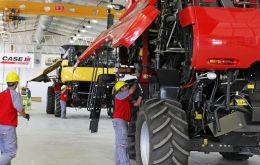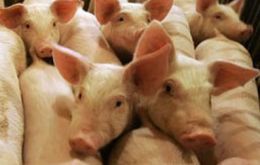MercoPress. South Atlantic News Agency
Economy
-
Friday, November 2nd 2012 - 06:36 UTC
Dollar plunges against the Uruguayan Peso in October; massive inflow of capital

The US dollar suffered in Uruguay during October its greatest fall since January 2009 following on the increase of the Central bank basic rate to 9% at the end of September, which turned Uruguayan bonds far more attractive for foreign investors.
-
Friday, November 2nd 2012 - 06:33 UTC
Uruguayan central bank indicator shows inflation is close to 11% in 12 months

Uruguay’s central bank said that consumer prices, excluding the most volatile items, have increased almost 11% in the last twelve months to September. Fresh fruit and vegetables, cigarettes and public utility rates are considered ‘volatile prices’.
-
Thursday, November 1st 2012 - 23:33 UTC
Euro-scepticism spreading in the British political system

Britain faces a crisis that could end with the world's sixth largest economy leaving the European Union, Deputy Prime Minister Nick Clegg warned ahead of a showdown over budget spending with other states in the 27-member bloc.
-
Thursday, November 1st 2012 - 23:28 UTC
Argentina tightens ‘dollar-clamp’: end to mortgage loans in US currency

Argentina tightened the ‘dollar clamp’ a further notch by including mortgage credits, which means people wanting to become home owners will not have access to the US currency.
-
Thursday, November 1st 2012 - 23:07 UTC
Cristina Fernandez criticizes US court and promises all debt bonds will be paid in dollars

President Cristina Fernández returned to stage on Thursday and assured that Argentina's dollar-denominated debt bonds are to be “paid in dollars” whilst criticizing the New York judiciary for its latest ruling against Argentina, in a speech at the Government House.
-
Thursday, November 1st 2012 - 16:29 UTC
September industrial production down 1% in Brazil; 12.4% in nine months

Industrial production in Brazil contracted more than expected in September. According to a release from the government stats office IBGE output from Brazilian factories and mines shrank 1% in September from August on a seasonally adjusted basis.
-
Thursday, November 1st 2012 - 07:00 UTC
Mexican president-elect pledges a tax reform bill in his first year in office

Mexico's president-elect, Enrique Peña Nieto, will present a tax reform bill during his first year in office, his top aide said on Tuesday, without providing any details on the plan.
-
Thursday, November 1st 2012 - 06:54 UTC
Fears the African Swine Fever outbreak in parts of Russia is out of control

According to official data from Moscow veterinary services, for the first nine months of 2012, in total 500,000 pigs were slaughtered in order to stop the spread of African Swine Fever (ASF) in Russia.
-
Thursday, November 1st 2012 - 06:47 UTC
Leading Argentine corporation claims the economy is in ‘very fragile situation”

One of Argentina’ leading international corporations, Techint, made public a 200 pages report sent to the Buenos Aires stock exchange with a devastating picture of the country’s economy which “continues in a state of fragility”.
-
Thursday, November 1st 2012 - 06:40 UTC
Wall Street returned to life with average trading volume; most buildings in the area with no power

The US stock market slowly returned to life on Wednesday after two days in the dark, in the wake of the massive storm Sandy that caused the market's first weather-related two-day closure since the late 19th century.
